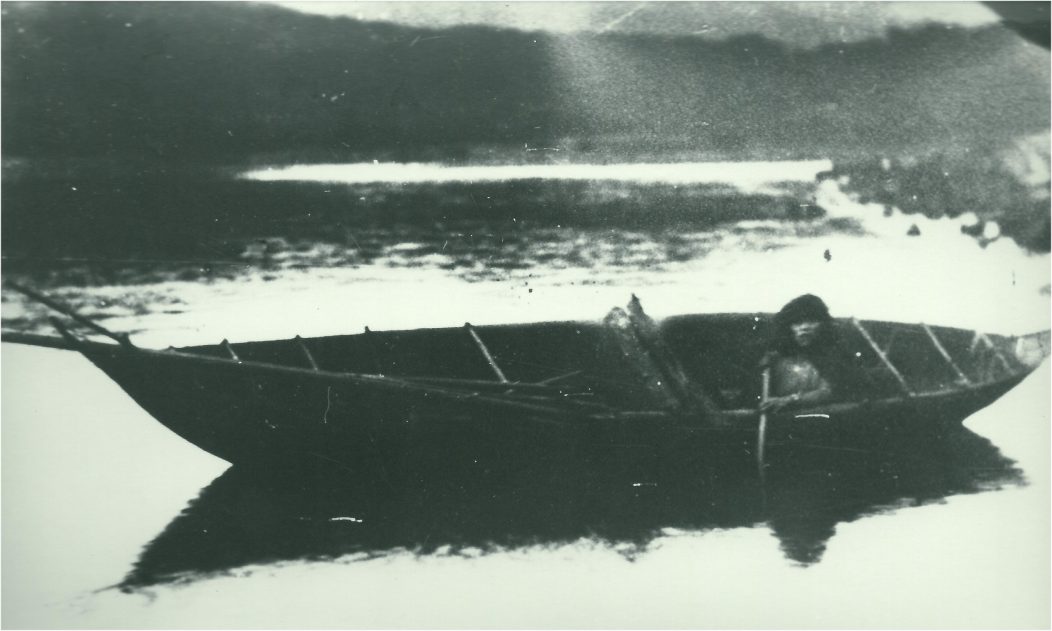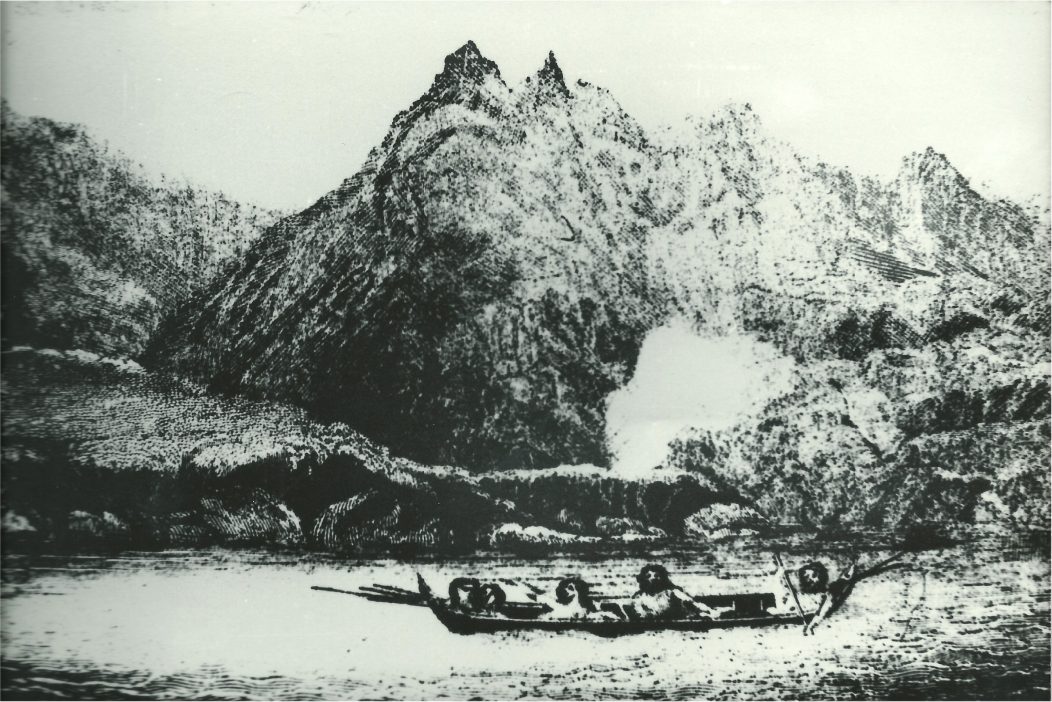Whilst the story of Charles Darwin’s voyage on HMS Beagle and his development of an evolutionary theory is well documented, there were three other passengers on board the Beagle as it sailed out of Plymouth in 1831 whose story is much less well known. They were El’leparu, O’run-del’lico and Yok’cushly, three natives of the Yamana tribe of Tierra del Fuego. This article tells the story of their capture, removal to England, and subsequent return to their homeland.
Four years before Darwin’s voyage, in 1826, the HMS Beagle had set sail for Tierra del Fuego in southern Patagonia to undertake a hydrographic survey. At that point this remote piece of land was not occupied by any European power, despite both Chile and Argentina making claims for the land based on de jure Spanish colonial legal titles. When the Beagle returned to England in 1830 under Captain Robert FitzRoy’s command, it was with four Fuegian hostages: two grown men, a 9-year-old girl and an adolescent boy. They were given new names by the British – York Minster (El’leparu) and Boat Memory (whose original Yamana name has been lost, and who died of smallpox shortly after reaching Britain), Fuegia Basket (Yok’cushly) and Jemmy Button (O’run-del’lico, whose new name reflected the payment made by the British explorers to his family – a mother-of-pearl button).
Upon arrival back in Britain, Captain FitzRoy announced that he had brought “savages” whom he was going to civilize and teach “the plainer truths of Christianity”. Thus the three surviving hostages were submitted to an extraordinary experiment and given a Victorian English education.
“ he had brought “savages” whom he was going to civilize and teach “the plainer truths of Christianity” ”
FitzRoy did not believe that he had kidnapped the Fuegians – on the contrary, he felt that their relocation would benefit them. To his mind the British culture, customs and language were superior to those of the Yamana, and exposure to them would, in the long term, compensate for the temporary separation from their homeland. FitzRoy’s intention was always to return the three to Tierra del Fuego once they had learnt the new culture. It was then hoped that they would fulfill a civilising role in the “dark continent”, evangelising and converting the Yamana people to Christian ways.
FitzRoy’s attitude very much reflected the prevailing European prejudices of the time, according to which the native lifestyle only depicted the sad testimony of the primitive, the decadent and the abject, withdrawn from the ideals of progress and spiritual integrity on which Western Christian culture was based. In other words, it was the contrast between civilisation and barbarism, and light versus dark. Today, however, we can see the experiment as an extraordinary act of imperialism, the stated anthropological interest concealing imperialistic ends, and perhaps the hope of gaining territory in the New World and securing the path to the Pacific Ocean through the Strait of Magellan and the Beagle Channel.
On their arrival in Britain the Fuegians were enrolled in St Mary’s Infant School in Walthamstow, where they remained from December 1830 to October 1831, learning English and practical skills such as gardening. Jemmy Button adapted best to his new circumstances – he particularly enjoyed wearing European clothes and would often admire his own reflection. The progress made by the Yamanas led to an audience, together with Captain FitzRoy, with King William IV and Queen Adelaide in St. James’s Palace. A royal audience was a rare honour, and the queen even gave Fuegia Basket a hat for her to wear back home.
“ Today we can see the experiment as an extraordinary act of imperialism ”
The transition to ‘civilisation’ was not uniformly smooth, however. York Minster, in particular, struggled to settle in (he was irked to be attending lessons with infants) and, when he embarked on a sexual relationship with Fuegia Basket, FitzRoy became alarmed at how his experiment was developing. Thus fifteen months after bringing them to Britain, he set sail again with the three Fuegians back to their homeland. Also on board was the young Charles Darwin, recently graduated from Cambridge.
When Darwin embarked on the voyage, it was with the intention of becoming an Anglican country parson on his return. In accordance with accepted doctrine of the time, Darwin believed in the theory of divine creation. His initial response to the native Fuegians they met in Tierra del Feugo reflected his beliefs. For him, they occupied a low position in the human hierarchical scale – they were “miserable, degraded savages”. Darwin believed that the difference between the “savages” and civilized man was greater than that between a wild animal and a domesticated animal. Eventually, however, his scientific work and observations led him to believe that every living creature had a common origin.
“ The transition to ‘civilisation’ was not uniformly smooth ”
After depositing the Yamana ‘missionaries’ on the island of “Buttons Land” (leaving them with a range of impractical gifts from English benefactors, such as china and glassware) the Beagle continued its voyage. It was a miserable return for the three Fuegians – they were robbed by their tribesmen, and York Minster subsequently married Fuegia Basket and in turn robbed Jemmy Button. When the Beagle returned eighteen months later to see how the three had adapted back to their homeland, they were met with a depressing scene. They found Button almost completely naked and dirty – little was left of the elegantly dressed gentleman who used to impress London’s high society. It seemed that FitzRoy’s experiment had failed, and the Captain sank into a deep depression.
The observations that Darwin made on this voyage, including the story and experiences of the three ‘civilised’ Fuegians, would form the basis for one of the most important scientific revolutions in the history of modern science, culminating in 1859 with the publication of The Origin of the Species. For Captain FitzRoy, however, the legacy of the second voyage of HMS Beagle was more complicated, and the failure of his missionary experiment weighed heavily on him. As for the four captured Fuegians, it would be hard to describe the experiment in anything but the most abject terms: it resulted directly in the death of Boat Memory, and for the other three their ‘civilising’ experience in England had no positive benefit on their return to Tierra del Fuego: Fuegia Basket was reported to have fallen into prostitution subsequently, Jemmy Button stood trial for murdering a group of missionaries, and York Minster allegedly died in a dispute.



